The 480 was an hastily built parts-bin-special Hail Mary of a guitar that actually kind of did what Rickenbacker hoped it would. Not terribly well regarded today, many have suffered the fates that often befall cheap used guitars—making nice clean ones hard to find. But a combination of low prices and stock Rickenbacker parts made 480s good “starter Ricks” for years, and may yet again!
The callback 90th Anniversary 480XC led to a spike in prices, but they have started to settle back down towards pre-XC levels. So what’s the 480’s story, and why should or shouldn’t you consider adding one to your collection? Let’s find out!
I know I must sound like a broken record, but 1969-1971 was pretty dire period for Rickenbacker. They were throwing all kinds of things at the wall to try to turn things around—new pickups, 24 frets, slanted frets, flashing lights—none of it worked. But one thing was starting to work all on its own: demand for the 4001 bass was surging.
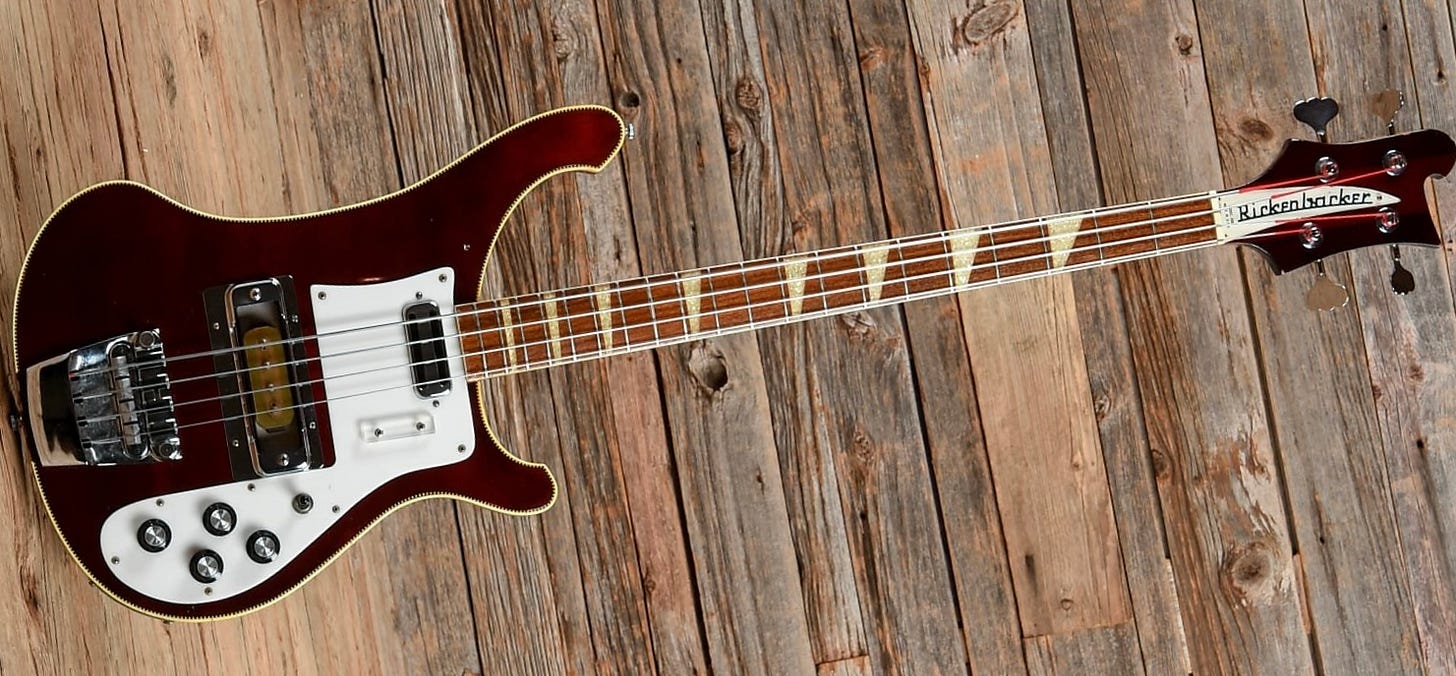
So Rickenbacker thought “what if 4001, but guitar?” Et voila, in 1972, the 480 was born.
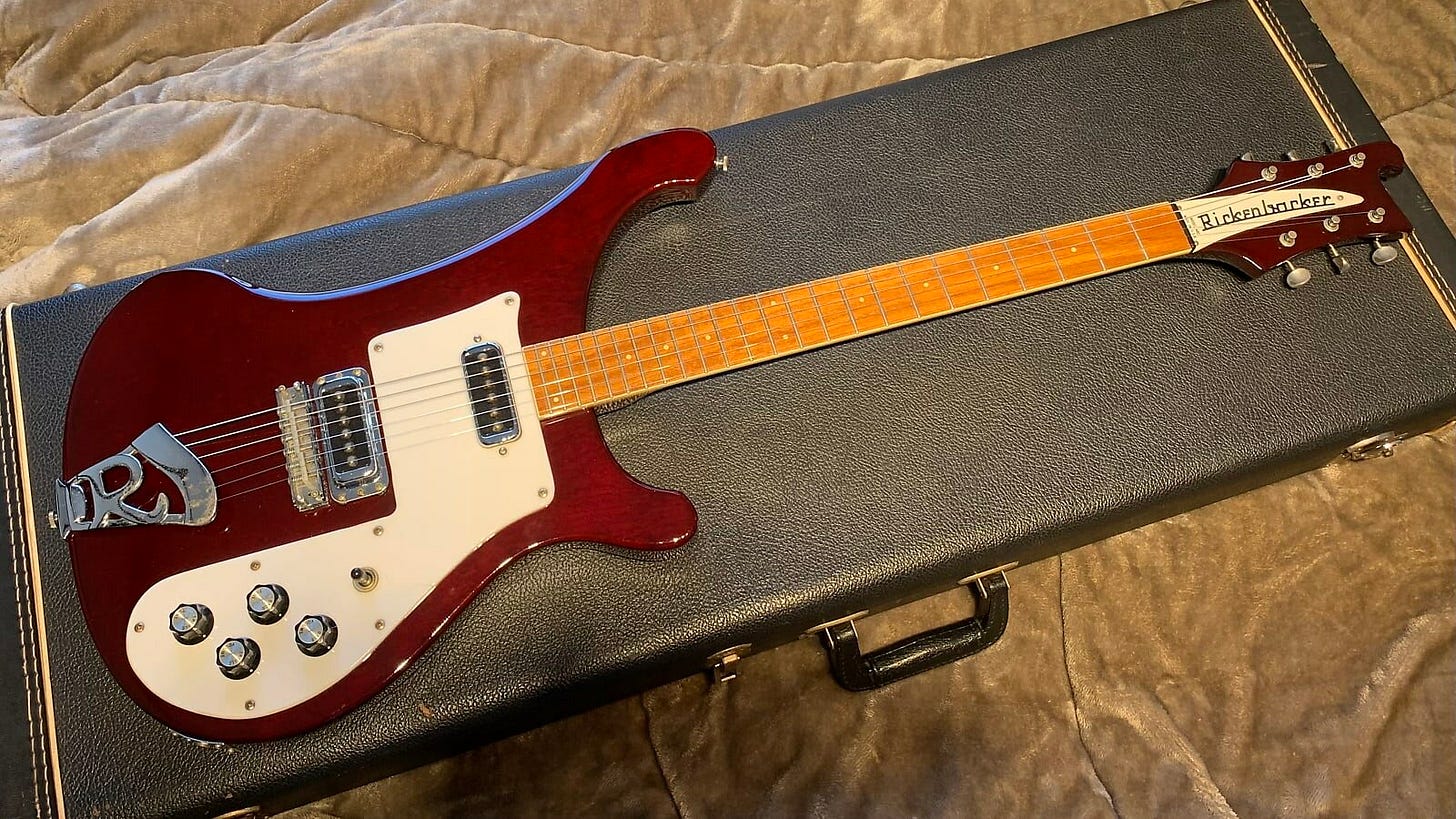
So the idea was pretty simple: turn the 4001 body into a guitar, using whatever parts were already on the shelf. And keep the cost as low as possible.
So the 4001’s neck-through construction was abandoned in favor of a bolt-on neck. The body was built from two center seamed pieces. The 4000 and 4001S would begin using the same body—albeit with a set neck—at the end of 1972.

Almost every part on the front of the guitar came directly out of the parts bin: first gen Higain pickups, standard 6 saddle adjustable bridge, R tailpiece, and silver top knobs. The 4001 pickguard was tweaked slightly—without having the large treble pickup surround to work around, the lower control “teardrop” was about 1/2” wider.
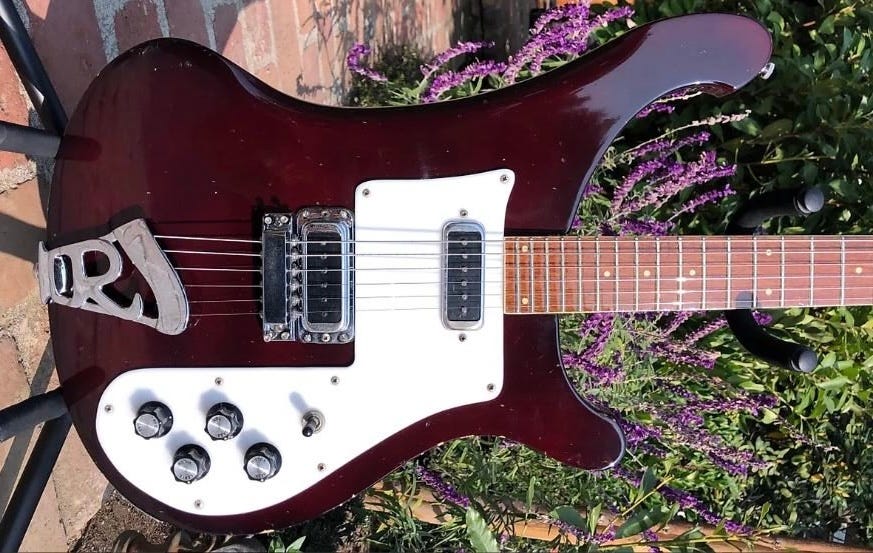
The neck was its own thing though—although some say the first few guitars made used leftover 331 fingerboards. And it is true that the 480 shared the 331’s bound 24 frets/dot inlays design, but the 480 got its own unique slimmed down version of the 4001’s cresting wave headstock equipped with standard Kluson Deluxe tuners:

So here’s where we have to talk about the 480’s Achilles heel: the geometry. Using stock parts and building to a price point came with a cost. Let me show you what I mean. Notice how the two pickups are mounted in the picture below:
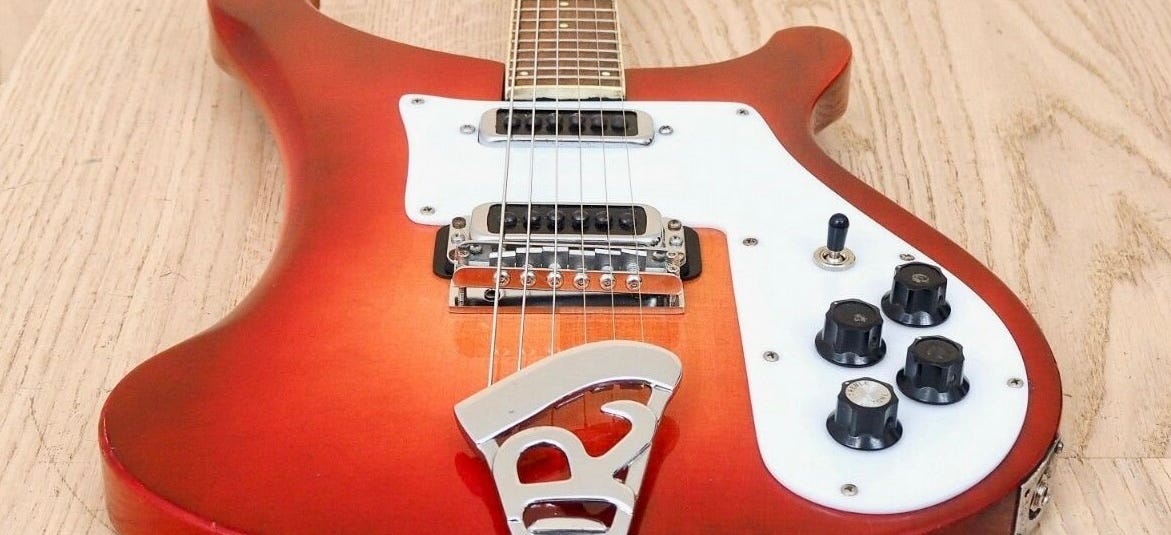
Notice how the bridge pickup is top mounted—like on a 300 or 600 series guitar—and the neck pickup is mounted under the pickguard—like on a 400 or 4000 series guitar. This causes a geometry problem.
Remember from our discussion on deck height that the distance from string to body is about 3/8” on guitars with pickguard mounted pickups, and about 3/4” on guitars with top mounted pickups—a difference of over 1/4”. Meaning the neck had to be installed at an angle, unlike any other Rickenbacker guitar made to that point. And they weren’t great at it.

So why do it like that? Well, they wanted the 4001’s look with the pickguard mounted pickup, and to use existing parts. And to keep it cheap! They could have routed out a cavity to sink the neck pickup—like they would end up doing on the 480XC—but then the stock bridge would be too tall so they’d have to rout out a cavity for it or source a new bridge. All of which cost money and time, and they wanted something fast and cheap. So an angled neck was the only solution.
But here’s the problem with the solution they came up with. The strings just barely clear the leading edge of the bridge pickup, and it’s impossible to raise the neck pickup far enough to get it in the ideal range. So the neck pickup is loud and if the neck angle isn’t right—which it isn’t on a lot of guitars—you can get “fret buzz” or even “fret out” on the front edge or button tops of the bridge pickup when playing in the higher registers. And the neck pickup is too quiet, and so getting the two of them balanced takes some fiddling with the volume knobs.
So, not a great design in that sense. But you know what? It sold anyway! Turns out the market answer to “what if 4001, but bass?” was “sure, I’ll give it a shot!” In fact, the 480 became the company’s top-selling 6 string guitar from 1973 through 1975. And when it was dethroned in 1976 it was by by another entry in the “what if 4001, but guitar?” category, the 481. Which will get its story told here another time!
1973 was the 480’s peak sales year, and the timing was perfect for Rickenbacker. Demand for both four and six string cresting wave bodies turned the company’s fortunes around and would carry them through the 1970s.
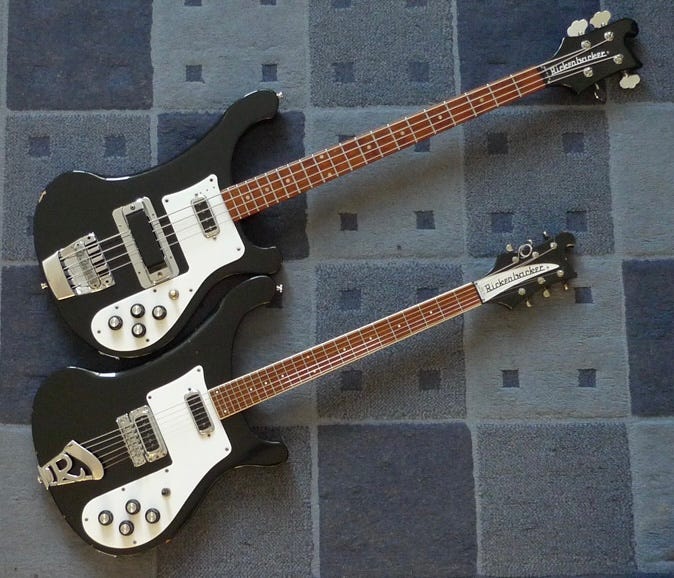
After 1973’s peak, sales began gradually declining. The humbucker equipped 481 would launch in 1974, eating into the 480’s sales and eventually dethrone it as the line’s top-seller in 1976. It would remain on the price list through 1984, but sales would continue to decline and the last proper production run appears to have happened in mid 1981.
Not a bad run for a rush job parts bin special! But here’s the thing: as many 480s as Rickenbacker sold in the 1970s, nobody really famous played one or became associated with the model. So while Rickenbacker guitar demand surged in the early 1980s thanks to guys like Tom Petty and Johnny Marr and Peter Buck…nobody wanted 480s.
So they got cheap. And cheap guitars get abused. Now, some smart folks realized that if you closed your eyes it still sounded like a Rickenbacker—because it is!—and the 480 became a great budget Rickenbacker for those people. But mostly they just got cheaper and more beat up.
That changed with the introduction of the 90th Anniversary 480XC in 2021. Regarded by many as an…unusual choice for an Anniversary model, it nonetheless stimulated interest in and demand for its namesake, driving prices up to double or more what they had been just a few short months before. We are just now in mid 2025 seeing that effect lessen.
Changes over the model’s lifespan were limited. For the first few months of production the 480 got the same “model-less” plexiglass truss rod cover as most lower volume guitars. But by late October, 1973 the truss rod cover bore a “MODEL 480” stamp over the “MADE IN U.S.A.” imprint.
Around August of 1973, as part of the change that was happening across the entire line the pickups changed from the first-gen threaded polepiece Higain to button-top Higains.

Starting in early 1976 the old plexiglass truss rod cover began phasing out across the entire line, to be replaced by the new injection molded raised letter version. While some higher volume/core models would get their model number stamped at the bottom of the cover, below the MADE IN U.S.A. stamp, the 480 did not.
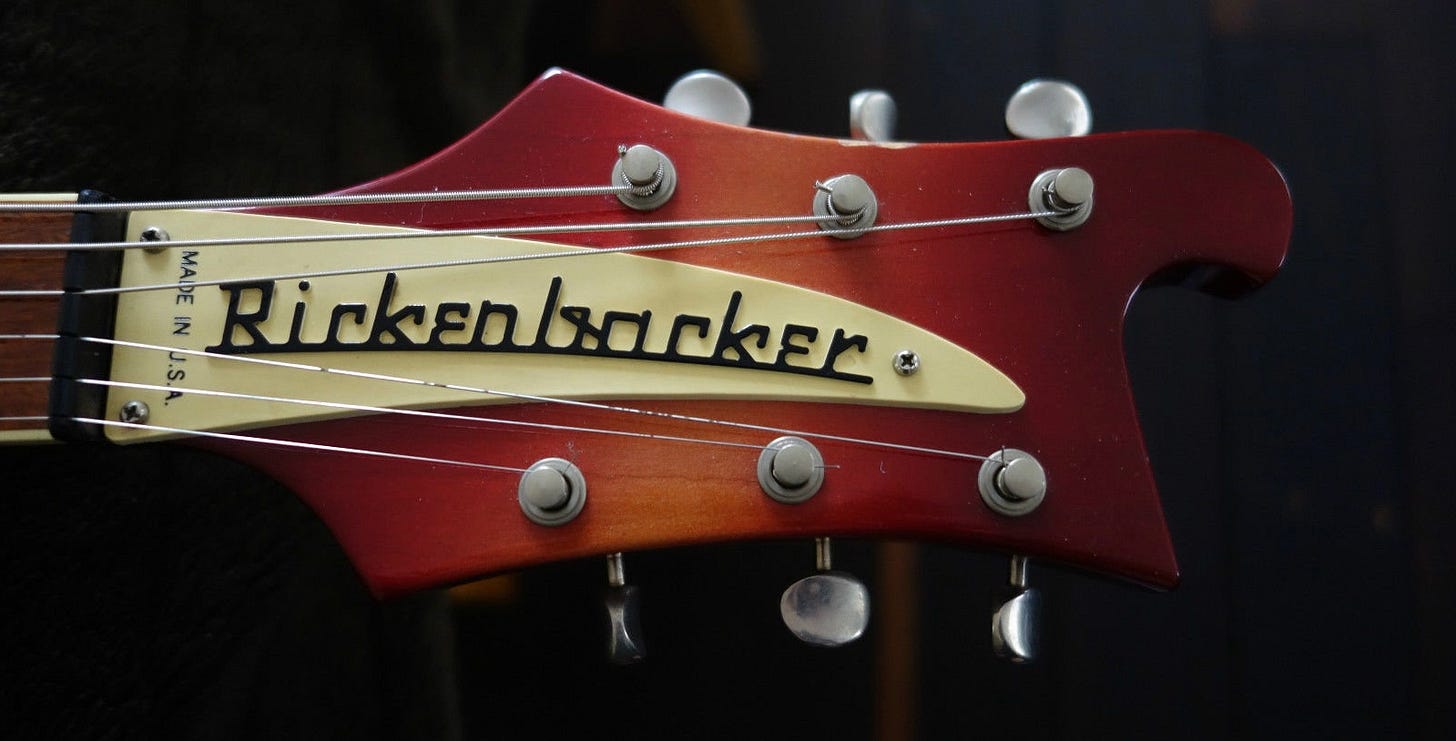
And that’s…pretty much it when it comes to changes. But we showed you a picture earlier of something we should probably talk about: the 483. So let’s do that.
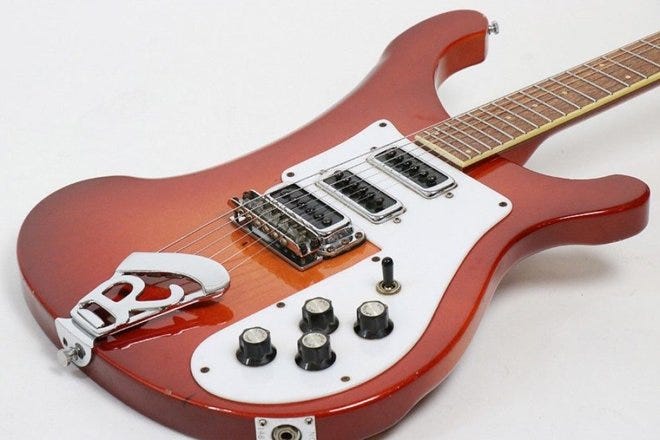
So the 483 is exactly what it sounds like: a 480 with three pickups. And if you thought the 480’s neck pickup was too far from the strings, check out the 483’s middle pickup! It might as well not even be there. That said, it was wired just like any other three pickup Rickenbacker.
All known examples—and there aren’t a ton of them—date to March and April of 1974. It wore a “MODEL 480” truss rod cover, and it did not appear on the price list. But it DID appear on the price list from 1982-1984, although none appear to have been produced during that time.
Here’s the odd thing about that. F.C. Hall was famous for keeping items on the price list as long as he had one in the warehouse—can’t get rid of it if people don’t know you have it, right? So what happened in 1982 to get it ADDED to the price list? Did they find one hidden in a dusty corner? Did they think there was pent up demand? We’ll never know.
And that’s the story of the 480. So should you add one to your collection? Despite the flaws we’ve listed, a good tech CAN help you get the neck angle right if needed, and you CAN dial in “the sound” if you’re patient. If prices keep falling to where they were pre-XC, the 480 could well reclaim its position as the smart player’s starter Rickenbacker. Plus which, 4001 but guitar!



Despite all the flaws, just love ‘em. Something really special about the 480.
Interesting article! The only famous people I recall seeing with one was Patty Smith and the guy from the mc5. (Maybe the same guitar).
Was this Rickenbacker’s only single neck guitar with a bolt on neck?